The Huawei Mate S Review
by Andrei Frumusanu on December 2, 2015 8:00 AM EST- Posted in
- Smartphones
- Huawei
- Mobile
- Kirin
- Mate S
Software UX
On the software side, we continue to see usage of Huawei's Android skin, EmotionUI 3.1. We've had a more in-depth look into EmotionUI in our review of the Huawei P8. As the Mate S comes out only a few months after the P8, we see little to no changes in terms of user-interface as both devices run the same software version.
In terms of design, I didn't mind that Huawei didn't introduce any major updates to the UI. I personally like EmotionUI's design language and I'm especially fond the black-accentuated version that comes with the P8 and Mate S. Unfortunately the lack of any update in the UI also means that the Mate S comes with some of the same negative shortcomings that I critiqued on the P8, such as the very unpractical paginated task-switcher interface or Huawei's odd handling of application memory management and its aggressive task-killer.
Where the Mate S differs from the P8 is of course the inclusion of the finger-print sensor. The Mate 7 was one of the first Android devices to introduce a non-swipe fingerprint reader and the Mate S' fingerprint reader improves on its predecessor by increasing both the speed and accuracy of the scanning, making it one of among the best implementations out there.
Huawei takes advantage of the fingerprint reader in ways that larger vendors such as Apple and Samsung fail to do: It actively uses the fingerprint scanner as a capacitive button / track pad that recognizes touches as well as swipes. A useful feature that seems very natural to use is the dropping-down of the notification shade when you swipe down on the fingerprint-reader. Another function is the possibility to navigate between images in the stock gallery by swiping left or right on the scanner.
GPU Performance
Since the Mate S comes with the same Kirin 93X chipset as the P8, we're not expecting any breakthrough performance of the new flagship. The Mali T628MP4 in the Kirin 935 runs at the same 680MHz speed that we've seen it running in the Kirin 930, and we have the same 800MHz LPDDR3 memory on board the Mate S.

Starting with the 3DMark Unlimited graphics score, we see the Mate S perform slightly better than the P8. This might be due to the increased CPU frequency or a side-effect of the newer r5p1 over r5p0 drivers on the Mate S.
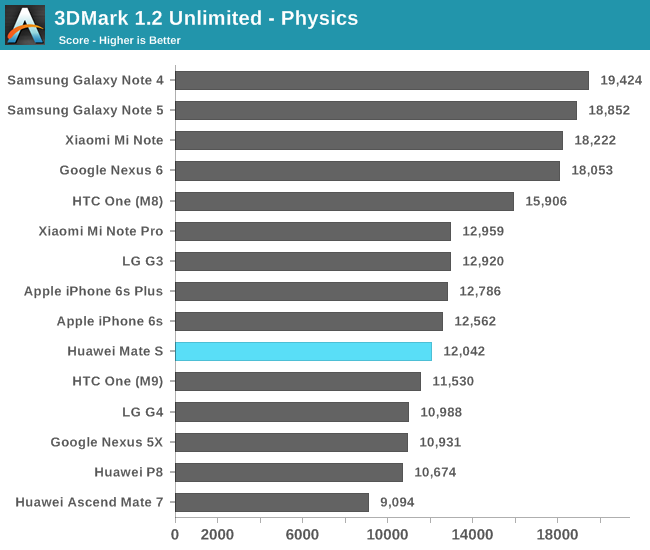
The physics test in 3DMark is mostly a CPU test and here we see results as expected with the increased CPU frequency bringing in about 12% improvement when compared to the P8. Unfortunately the little A53 cores can't keep up with the more powerful CPU architectures found in other devices in our list.
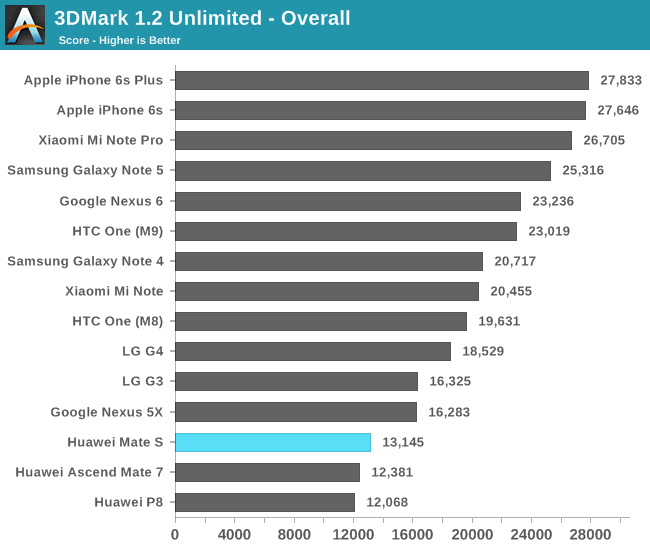
Because of the weak GPU, the Mate S again finds itself among the worstp performing devices, next to the P8 and last year's Mate 7.


Moving onto GFXBench, we see a similar picture as the Mate S ends up among the worst performing high-end devices released in the last 18 months.
In the review of the P8, I complained about the throttling behaviour of the Kirin 930 and unfortunately that's again something that the Mate S adopts. It seems the Mate S has only slightly better thermal characteristics as the device sits tight at 11fps for the whole duration of the battery rundown after reaching its maximum throttling level.
NAND Performance
Our review device came in with a 32GB SanDisk eMMC NAND module. On Android devices we test NAND performance by using AndroBench. To test sequential reads and writes, we use 256KB buffers executed on a single thread.
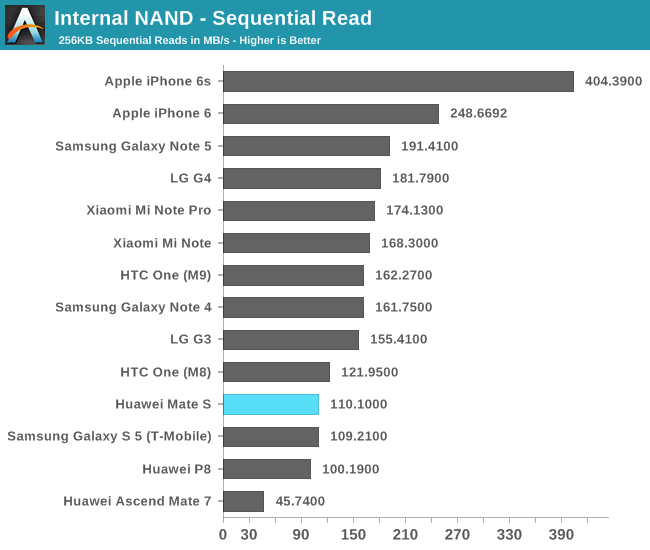
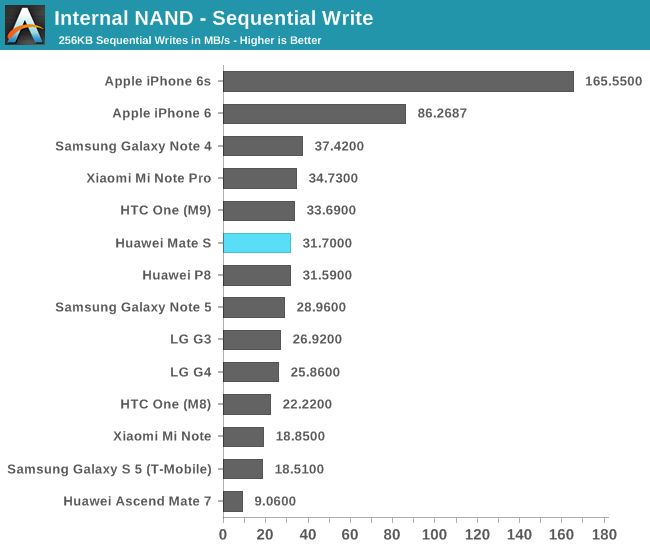
The NAND on the Mate S seems to be a slight improvement on the one found on the P8. The read and write speeds are acceptable but unfortunately also nothing to write home about. It seems the Mate S employs a similar eMMC chipset as the P8 as the results fall within the same performance region.


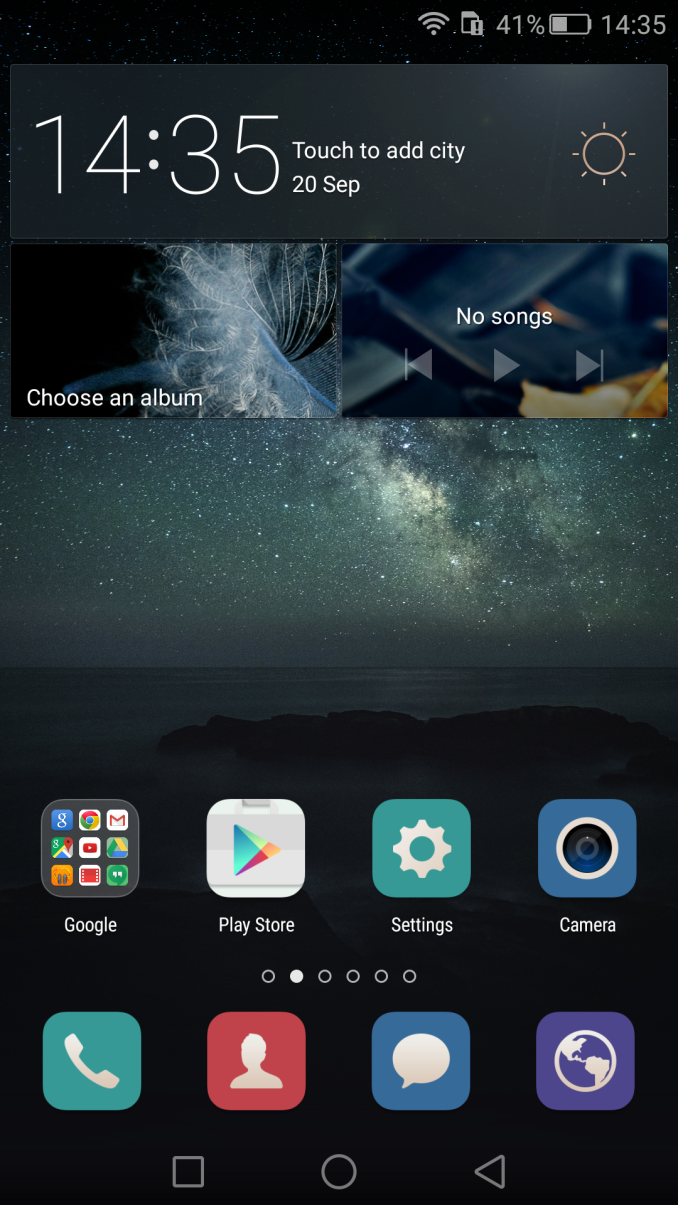

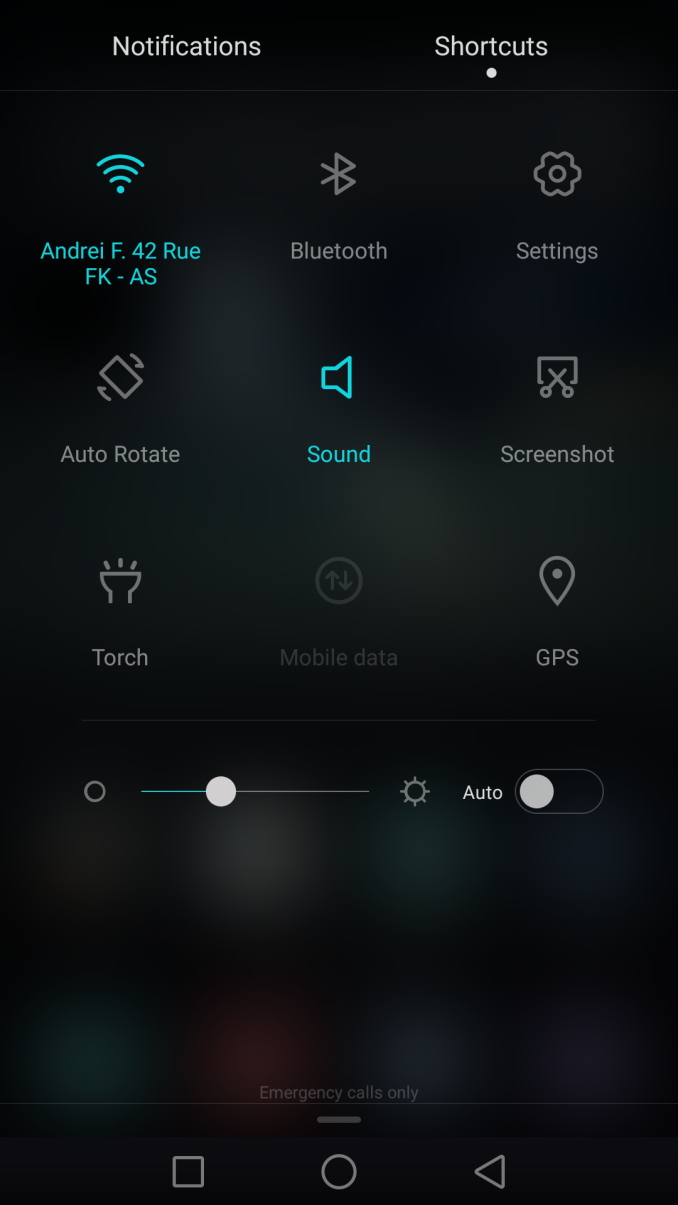


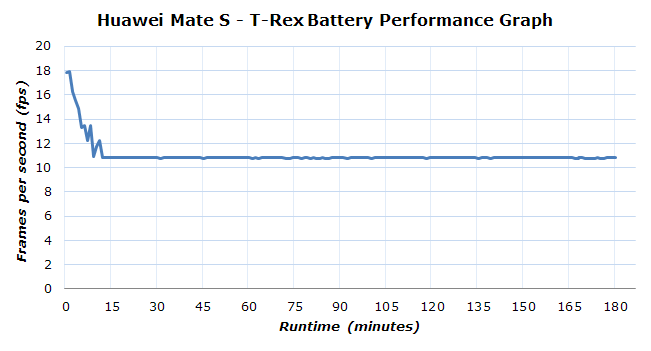








54 Comments
View All Comments
tipoo - Wednesday, December 2, 2015 - link
The 4 low power cores seem to consume more power than the high performance core cluster, they just shut off earlier. Curious.With lower core counts in use it shaves off a bit though, but I'm still not convinced big.LITTLE with the same core types is worthwhile. Radically different cores? Sure. Might have more to do with "8" being significant in China.
Exophase - Wednesday, December 2, 2015 - link
You can't say either cluster consumes more or less power than the other because they have different power/frequency curves. The power-optimized cluster may use (marginally) more power near the top of its clock speed but you can see by 1GHz it uses significantly less. I don't know precisely how the two different clusters vary but I would guess that the power optimized cluster sacrifices much voltage/frequency scaling in exchange for much lower leakage.Since the scheduler works with a gap between the "up" and "down" transition points in order to avoid hysteresis it makes sense to have the upper end of the power optimized cluster's performance range exceed the lower end of the performance optimized cluster's. Even if it uses a little more power doing so.
From a pure DVFS standpoint the power consumption curves presented are a fairly convincing argument for why this A53 + "A53e" setup is worthwhile. Either cluster on their own is pretty clearly inferior, either the A53e cluster needing 100+mW while on at its lowest frequency or the A53 cluster incapable of exceeding 1.5GHz. Perhaps a hypothetical implementation in between the two would be "good enough", but I'd argue that if you must use Cortex-A53 cores even a couple hundred extra MHz at the upper end is highly desirable for a lot of users.
Since the utility of DVFS is a foregone conclusion at this point the only real question is if the overhead in transitioning between cores is small enough to make this work as a DVFS system (we'll put aside the extra advantages and complications of a full HMP setup). A lot of people are arguing that it isn't, but I'm not really seeing hard data to support this. I personally believe people underestimate the number of loads that either have low frequency swings in performance requirements or reach a full on steady state for long periods of time. Even on mobile devices.
Andrei Frumusanu - Wednesday, December 2, 2015 - link
Yes, good analysis.Please keep in mind that we might not be seeing the full curves as the vendors simply cut them off where it doesn't make sense. The 1GHz point is extremely important as a pointer as to what the actual physical difference is. Again it's a pity that I can't access the voltages on HiSilicon SoCs otherwise this would be a much easier discussion to back up, but imagine that for the perf cluster the 1GHz spot would basically be the bottom in terms of scaling voltage down at which point race to idle takes over. The other way round for the power cluster, voltages at the top frequencies there might already have reached the high end and thus not be able to go further up in frequency, but on the other side of the curve they're able to go much lower in power.
All in all I think it still makes a lot of sense in terms of implementation.
deskjob - Wednesday, December 2, 2015 - link
Is it me or is this a blatant rip-off of the HTC One series design language?s.yu - Saturday, December 5, 2015 - link
Huawei's been copying designs from this company and that. P8 was some Sony with a little Apple and HTC, lol.fanofanand - Wednesday, December 2, 2015 - link
At the heart of the Mate S we find the HiSilicon Kirin 935. This is the same SoC that was found on the basic model Huawei P8Chart shows 930
Andrei Frumusanu - Wednesday, December 2, 2015 - link
Corrected, thanks. But in truth they're both the same piece of silicon, the 935 is just a marketing name of the higher binned SoC.fanofanand - Wednesday, December 2, 2015 - link
I just know you are a details guy. I love reading your analysis and have bought 2 phones based on your reviews. Keep up the great work and ignore the Apple/Samsung trolls :)Ethos Evoss - Wednesday, December 2, 2015 - link
HUaaaweii smartphonee got battered as usual on this site :DDDAnanadidatechno-tech .. I CANNOT WAIT for Mate 8 review what u gonna say all about it ..
I BETTING on next batter AGAIN :DDD even it has higher specs .. you will describe all as all on bottom graphs :DDD
Don't worry I do not own huawei smartphone anymore.. will see in future.. :)
Ethos Evoss - Wednesday, December 2, 2015 - link
You completelly forgot about Force Touch tho ..